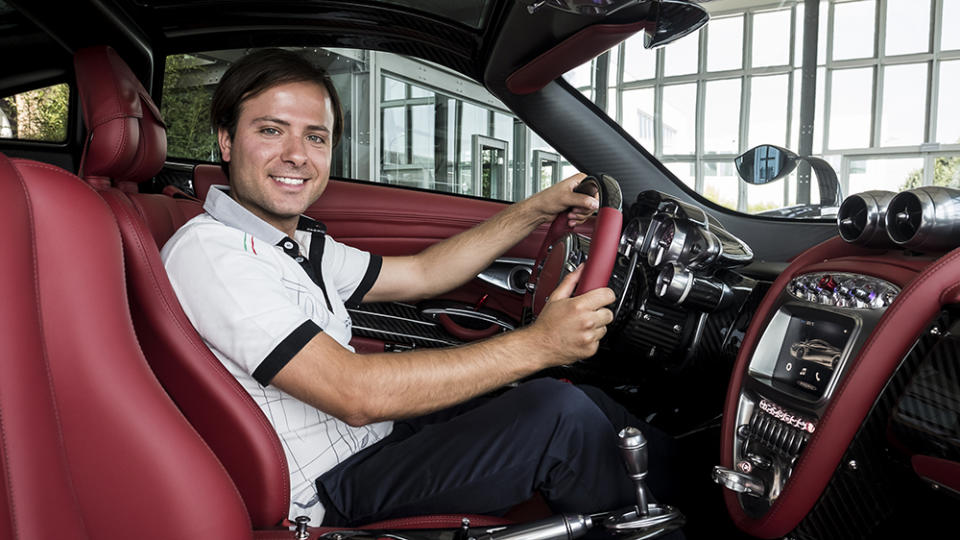Christopher Pagani on Why the Italian Marque’s New V-12 Utopia Hypercar Is as Old School as It Gets

Unlike in the natural world, where profound complexity often expresses itself within elegant design—think of the Fibonacci spiral found in a sunflower’s center—the modern automotive landscape is mostly an expanse of mass-market homogeneity that has taken the form right out of function. Pagani Automobili, however, remains synonymous with exquisite engineering and artisanship. Christopher Pagani, head of marketing and son of founder Horacio Pagani, explains what fuels the boutique Italian automaker’s approach and why its latest model—the 864 hp Utopia hypercar, which starts at just under $2 million, is limited to 99 examples and sold out a full year before launch—is a bit of a maverick.
Describe the ethos of Pagani.
We consider it a combination of art and science. It’s a philosophy that dates back to Leonardo da Vinci, who my father first read about when he was 12 or 13 years old and who he still studies on a daily basis. As for the other main pillars of the brand, it’s definitely the fact that every car we do here in Modena is an extension of the client. Then, we develop our cars to be at the pinnacle of technology found in the market.
More from Robb Report
When you say “an extension,” how much of the client factors into each production?
The goal of my father has always been to find the excitement in the client. When you build such a small amount of cars per year, you can really spend time with your clients and understand their hobbies, their personality. The more you listen, the more you’re able to translate that emotion to the car.
What was the inspiration for the new Utopia? And how long did it take to develop?
It was very important for us to create something that was still using the internal-combustion power train, so it has a V-12 engine without any hybrid system. And one of the things we always wanted to bring back was the manual transmission. The Utopia adds very smooth, clean surfaces to the body, but even though it may look like a simple design, the details of the engineering make it a very complicated car. The downforce is the same or higher than our Huayra Roadster BC, which has tons of flaps and different aero flicks. Most of the companies around us take 18 to 24 months to create a car. The Utopia took six years. It’s about challenging yourself to get the detail you really want. Next year is our 25th anniversary, and this is our third model.

You mentioned the smoother approach to aero—how else does the Utopia differ from your previous models?
When we create a new car, we don’t carry anything over from other vehicles. The Utopia is a new way of looking at the driving experience because it’s a twin-turbo V-12 that has 1,100 Nm [about 811 ft lbs] of torque. To manage that amount of torque in a car that weighs only 1,300 kilograms [2,866 pounds] is ridiculous. And then we wanted 21-inch wheels at the front and 22-inch wheels at the back—that’s a huge tire that Pirelli created specifically for this car. The bigger tires are a design feature but also help the drive dynamics.
You said it was important that the Utopia showcased an internal-combustion engine. Are you under the same timetable for electrification as larger marques when it comes to the European Union’s emissions regulations?
We’ve been afforded more freedom than others when it comes to those rules. We recently received an update that small manufacturers can use internal-combustion engines for a far longer period before needing to go toward electrification.
Back to Leonardo da Vinci: What do you think his reaction to the Utopia would be?
When we did the launch of the Utopia, we were able to have six original drawings from Leonardo displayed next to the car. I think he’s looking at us and is very critical, like my dad. He’s not going to tell you he loves it—he’s going to smile, but that’s it.
Best of Robb Report
Sign up for Robb Report's Newsletter. For the latest news, follow us on Facebook, Twitter, and Instagram.